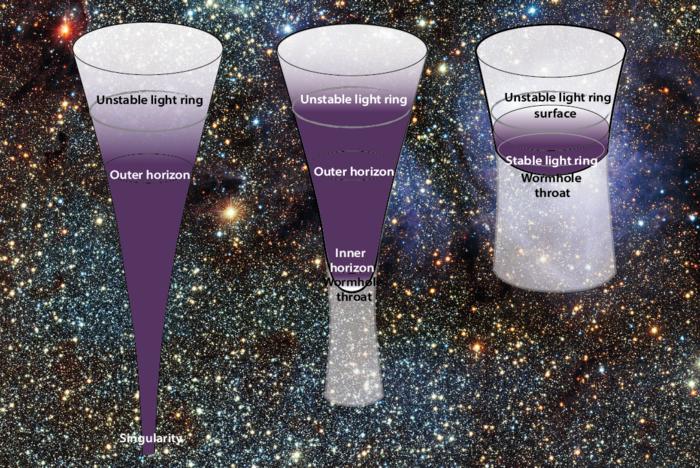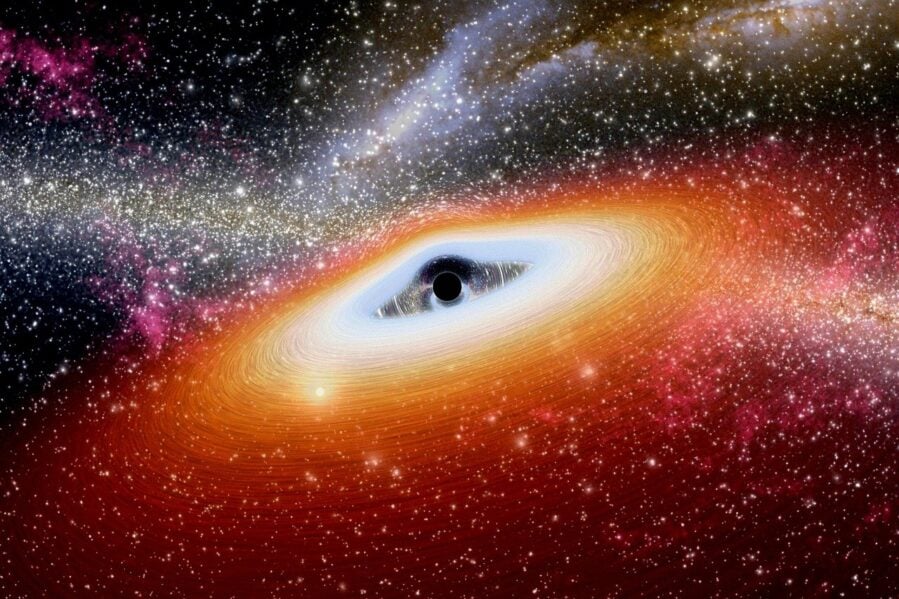New research challenges one of the most perplexing aspects of black holes – the mysterious singularity at their core where physics seemingly breaks down. A collaborative paper published in the Journal of Cosmology and Astroparticle Physics (JCAP) explores alternative models that could revolutionize our understanding of these cosmic giants.
Black holes have fascinated and confused scientists since Karl Schwarzschild first derived their existence from Einstein’s equations in 1916. While recent observations have confirmed these extreme objects exist, the troubling mathematical prediction of an infinite density point at their center has remained scientifically unsatisfying.
“Hic sunt leones,” remarks Stefano Liberati, one of the authors of the paper and director of IFPU, referring to the hypothetical singularity predicted at the center of standard black holes. This Latin phrase, historically used on maps to mark unexplored territories, aptly describes our current understanding of black hole centers – regions where our laws of physics seem to fail.

The singularity problem has persisted despite remarkable observational advances. The 2015 detection of gravitational waves from merging black holes and the stunning images captured by the Event Horizon Telescope in 2019 and 2022 confirmed black holes exist but provided no insight into their innermost structure.
According to Liberati, this knowledge gap is “an unacceptable situation for science.” This is precisely why researchers have long sought alternative models where quantum effects might “heal” the singularity.
What makes this new paper particularly valuable is its collaborative approach. Rather than coming from a single research team, it synthesizes discussions among leading experts who gathered at a dedicated IFPU workshop. “It’s something more,” explains Liberati. “It emerged from a set of discussions among leading experts in the field — theorists and phenomenologists, junior and senior researchers — all brought together during a dedicated IFPU workshop.”
The paper outlines three primary black hole models:
- Standard black holes (with both singularity and event horizon)
- Regular black holes (with event horizon but no singularity)
- Black hole mimickers (with neither singularity nor event horizon)
The latter two alternatives offer potential paths forward that maintain consistency with Einstein’s equations while avoiding the troublesome infinite density point. The paper explores how these alternative structures might form and, crucially, how scientists might distinguish them observationally from standard black holes.
Current observational techniques haven’t yet provided definitive answers about black hole interiors. However, Liberati remains optimistic: “Regular black holes, and especially mimickers, are never exactly identical to standard black holes — not even outside the horizon. So observations that probe these regions could, indirectly, tell us something about their internal structure.”
Future research might detect subtle deviations from Einstein’s predictions using increasingly sophisticated instruments. For instance, higher-resolution imaging from the Event Horizon Telescope could reveal unexpected details in the light bent around these objects. Gravitational wave detections might show anomalies consistent with non-classical spacetime geometries.
The research team acknowledges current limitations in predicting exactly what perturbations observers should look for. However, theoretical understanding and numerical simulations are advancing rapidly, potentially guiding the development of specialized observational tools.
This pursuit carries significance beyond black hole physics. Resolving the singularity problem could contribute to developing a quantum theory of gravity – the long-sought bridge between general relativity and quantum mechanics.
“What lies ahead for gravity research,” concludes Liberati, “is a truly exciting time. We are entering an era where a vast and unexplored landscape is opening up before us.”
The paper, titled “Towards a Non-singular Paradigm of Black Hole Physics,” appears in the Journal of Cosmology and Astroparticle Physics.
If our reporting has informed or inspired you, please consider making a donation. Every contribution, no matter the size, empowers us to continue delivering accurate, engaging, and trustworthy science and medical news. Independent journalism requires time, effort, and resources—your support ensures we can keep uncovering the stories that matter most to you.
Join us in making knowledge accessible and impactful. Thank you for standing with us!

